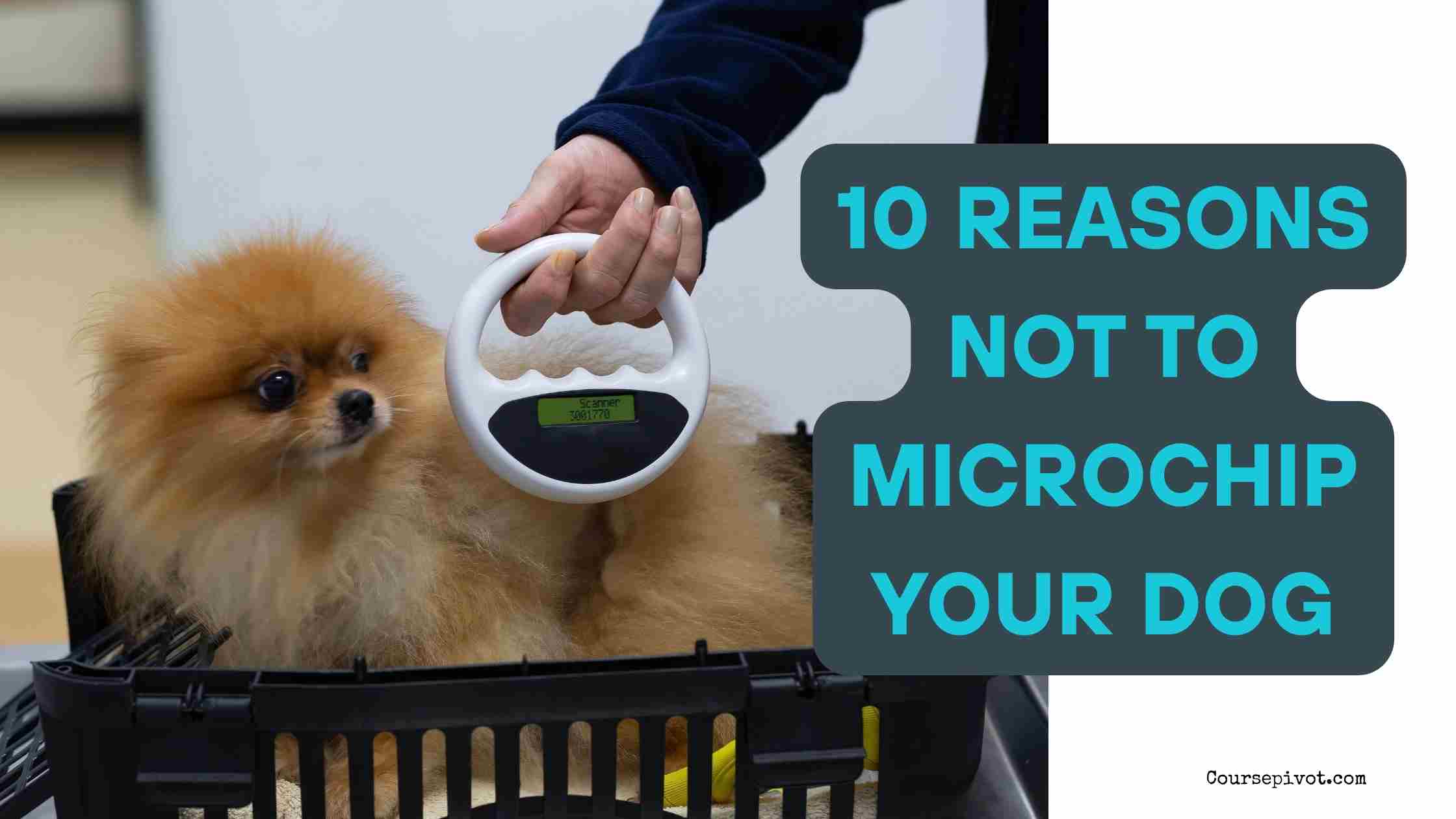
10 Reasons Not to Microchip Your Dog
Have you ever been told that microchipping your dog is the responsible thing to do? I know I have — more times than I can count.
But here’s what no one talks about: What if it’s not always the best choice?
What if choosing not to microchip your dog is a valid, thoughtful decision based on real concerns?
That was the case for me. As a dog owner who loves my pup more than I can put into words, I started questioning the entire concept of inserting a tracking chip under my dog’s skin.
It sounded high-tech and convenient, yes — but it also sounded… invasive.
Table of Contents
I did my research. I asked questions. And what I found shocked me.
So if you’re wondering whether microchipping your dog is safe, necessary, or even ethical, here are 10 reasons not to microchip your dog — reasons I believe are worth serious consideration.
🧠 1. It’s not 100% reliable
Microchips can fail. Yes, fail.
They can move, become unreadable, or simply go undetected by certain scanners.
So even if your dog is chipped, there’s no guarantee they’ll be identified if lost.
🩺 2. It’s a medical procedure — with risks
Let’s not sugarcoat it.
A microchip is injected with a needle into your dog’s body.
While the process is quick, it’s not without risk.
There are reported cases of bleeding, swelling, and even tumors developing near the chip site (although rare).
If you’re someone who avoids unnecessary medical procedures, this may feel too intrusive for your pet.
🔒 3. It feels like a privacy invasion
One of my biggest reasons for avoiding it was this:
Do I really want a permanent tracking device inside my dog?
Even though most chips don’t have GPS, the concept of a database storing my contact info and my pet’s identity just didn’t sit well with me.
Some pet owners don’t want to be part of a system they didn’t choose or control.
💸 4. Hidden costs are everywhere
They say microchipping is affordable. And in some places, it is — until you realize the extra fees:
- Updating information
- Annual registration with private databases
- Vet scan charges
It adds up. Especially if you’re managing multiple pets.
🐾 5. Identification tags can work just as well
A sturdy collar and a clear ID tag with your phone number are often faster and easier for someone who finds your dog.
Instead of scanning a chip, they can just call you.
No vet. No database. No delay.
Simple works.
🧬 6. It’s permanent — and hard to remove
Once that chip is inserted, it’s there for life.
If your views change or your pet has a reaction, removing it is not an easy option.
That permanence can be unsettling — especially when it involves your dog’s health.
🧪 7. Rare but real side effects
Though manufacturers often claim the procedure is safe, some dogs do experience negative effects:
- Scar tissue formation
- Infection at the injection site
- Behavioral changes post-procedure (like itching or sensitivity)
While rare, these effects are real — and not talked about enough.
🚨 8. Not all shelters or clinics have universal scanners
You’d think a chip guarantees you’ll get your dog back if lost.
But that’s assuming the shelter that finds your dog:
- Has a scanner that works on your chip brand, and
- Actually scans the dog properly
In practice, not all scanners are universal, and human error happens. So no, it’s not foolproof.
🐶 9. Some dogs simply don’t tolerate it well
Not every dog handles injections or foreign objects in their body the same way.
Some may:
- Develop anxiety when visiting the vet
- Become sensitive to touch near the injection site
- Show discomfort or pain
If your dog has a nervous temperament, it’s worth rethinking whether this is worth it.
❓ 10. It’s your choice — not a moral obligation
People will guilt you into thinking “you’re a bad pet parent if you don’t microchip.”
But here’s the truth:
You know your dog better than anyone.
You know what they need, how they respond to procedures, and what systems you’re comfortable participating in.
It’s okay to say no.
It doesn’t mean you love your dog any less. In fact, it might mean you’re loving them more consciously.
Not Microchipping Doesn’t Mean You’re Irresponsible
Deciding not to microchip your dog is a personal, thoughtful choice.
It’s not about rebellion. It’s about awareness.
Ask yourself:
- Does it align with my values?
- Am I comfortable with the risks?
- Are there alternatives that work better for me and my pet?
I chose not to microchip my dog. I use a GPS tracker on the collar and update ID tags regularly.
It’s low-tech but it works — and I sleep better knowing I made the choice that felt right.
So the next time someone says, “Why wouldn’t you microchip your dog?”
You’ll have 10 solid answers.
Cite this article
You can copy and paste your preferred citation format below.
Martin, L. & Arquette, E.. (2025, May 21). 10 Reasons Not to Microchip Your Dog. Coursepivot.com. https://coursepivot.com/blog/10-reasons-not-to-microchip-your-dog/



